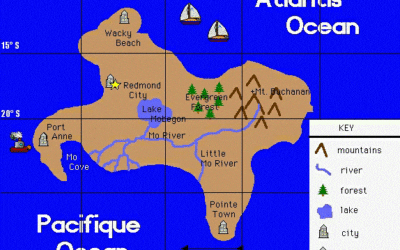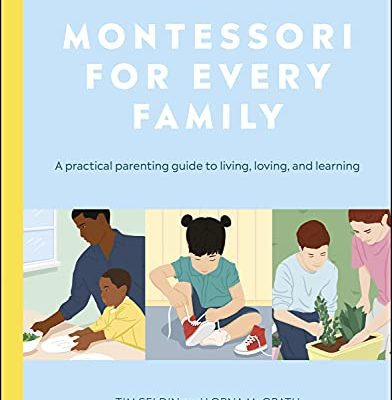
Budgeting, Funding, and Financial Planning for Your Dream
by Tim Seldin, Montessori Foundation
Once you’ve clarified your vision, confirmed your licensing or private-school pathway, and begun looking for the right property, the next big question usually looms large:
“How much money will it take to open our Montessori school—and where will it come from?”
The honest answer is: it depends. The total investment varies dramatically based on your location, facility size, and the level of the program you plan to serve. But with thoughtful planning, phased growth, and a clear vision, it’s entirely possible to launch a sustainable Montessori school without overextending yourself.
1. Start with Your Vision and Scale
Your educational vision drives your startup budget. Before running any numbers, define the scope of your initial launch and your plan for growth. Are you opening:
-
A small early-childhood program with one or two classrooms (ages 18 months–6 years)?
-
A full elementary program serving ages 6–12?
-
A complete school community that extends through middle or even high school?
Each level adds layers of complexity—larger facilities, specialized classrooms and materials, certified teachers, and more diverse operational needs.
For example:
-
A two-classroom preschool might start with 60–75 students.
-
A K–6 elementary program often stabilizes around 120–150 students.
-
A K–8 or K–12 school typically reaches 200–300 students to be fully sustainable.
It’s often wiser to begin modestly and expand in well-planned phases rather than overbuild and struggle to fill classrooms.
2. The Major Categories of Startup Costs
When the Montessori Foundation helps founders prepare feasibility studies, we divide costs into three broad phases:
A. Pre-Opening Costs
These are the groundwork expenses that occur before you open your doors:
-
Legal formation, consulting, and incorporation fees
-
Licensing or private-school approval applications
-
Architectural design, site surveys, and permitting
-
Branding, logo, and website design
-
Marketing, admissions, and promotional materials
-
Deposits on rent, insurance, and utilities
Expect this stage to range from $25,000–$100,000, depending on how much professional assistance you engage and the size of your vision.
B. Facility and Equipment Costs
This is where most of your capital will go. The cost depends heavily on your region, the condition of your site, and the size of your program.
| Category | Typical Range |
|---|---|
| Leasehold improvements (renovation, paint, lighting, flooring) | $100–$200 per sq. ft. |
| New construction (if applicable) | $250–$400+ per sq. ft. |
| Outdoor learning environment / playground | $75,000–$200,000 |
| Classroom furniture and furnishings | $15,000–$35,000 per classroom |
| Montessori materials (complete set) | $12,000–$25,000 per classroom |
| Adolescent labs, art/science/tech spaces | $25,000–$100,000+ |
| Safety, security, signage, IT infrastructure | $15,000–$50,000 |
For a modest three-classroom preschool or lower-elementary facility of 4,000–5,000 square feet, total startup costs may range from $350,000 to $600,000.
A larger K–8 or K–12 campus with specialized spaces (labs, library, arts, athletics) may require $1–2 million or more in total capital investment.
C. Working Capital (Cash for the First 3–6 Months)
Even after you open, you’ll need reserves to support operations while enrollment grows. Plan for at least three to six months of operating expenses, including:
-
Payroll and benefits
-
Rent or mortgage payments
-
Utilities, insurance, and maintenance
-
Educational materials and supplies
-
Marketing and admissions follow-up
For a program with 100–150 students, this typically means $150,000–$300,000 in working capital.
3. Sample Startup Budgets by School Type
| Type of Program | Capacity | Estimated Startup Range (U.S.) |
|---|---|---|
| Home-based or micro Montessori school | 10–20 students | $40,000–$80,000 |
| Leased early-childhood center | 40–60 students | $200,000–$400,000 |
| Preschool & Elementary (leased space) | 75–120 students | $400,000–$800,000 |
| Purchased or renovated facility (K–8) | 120–180 students | $700,000–$1.2 million |
| New construction or full campus (K–12) | 200–300 students | $1.5–$3 million+ |
These ranges include furnishings, materials, and modest working capital but exclude the cost of land purchases.
4. Funding Options
Launching a school often involves creative combinations of personal investment, community support, and financing. Common avenues include:
Personal Savings or Home Equity
Many founders use personal assets or family funding.
-
Advantage: Full control; no debt or investor oversight.
-
Risk: High personal exposure—consult a financial advisor before committing retirement or home equity funds.
Bank or SBA Loans
The U.S. Small Business Administration offers loans well-suited to schools:
-
SBA Microloan: Up to $50,000 for startup costs.
-
SBA 7(a) Loan: Up to $5 million for real estate or major investment.
To qualify, you’ll need: -
A detailed business plan and financial projections
-
Strong credit and some collateral
-
Demonstrated management experience in education
Private Investors or Partners
Some schools begin with local businesspeople, philanthropists, or parent investors. These equity partnerships can relieve early cash-flow strain but require clear agreements about ownership, governance, and long-term exit plans.
Community Development and Grants
Explore:
-
Local or regional economic development funds for revitalizing property
-
Nonprofit, educational, or faith-based grants
-
State incentives for workforce or early learning expansion
The Montessori Foundation can advise on approaching donors or community foundations to support scholarships, facilities, or sustainability funds.
Tuition Prepayment and Founding Family Pledges
Many schools invite early families to contribute through pre-enrollment deposits, founding family pledges, or community crowdfunding. Be transparent about how funds will be held and used.
5. Creating a Sound Financial Plan
Before spending a dollar, build a clear, living financial model that includes:
-
Startup cost summary (renovations, furnishings, materials, soft costs)
-
Monthly operating budget (staff, benefits, rent, insurance, marketing)
-
Projected tuition revenue (based on realistic ramp-up and attrition)
-
Cash flow forecasts for 24–36 months
-
Break-even analysis (minimum enrollment to sustain operations)
The Montessori Foundation often assists new schools in preparing feasibility studies and financial projections aligned with realistic enrollment growth.
6. Balancing Quality and Cost
Starting small doesn’t mean compromising quality—it means prioritizing essentials:
-
Invest first in trained Montessori educators and a beautiful, complete environment.
-
Purchase high-quality Montessori materials gradually but strategically.
-
Delay non-essentials like large administrative offices or expensive landscaping until you’re financially stable.
Children flourish in simple, orderly spaces guided by dedicated teachers—more than they ever would in a lavish facility with exhausted staff and tight budgets.
7. Tuition Strategy and Long-Term Sustainability
Set tuition that reflects your quality and covers true operating costs.
-
Research your market: Compare tuition in nearby Montessori and independent schools.
-
Avoid underpricing: Schools that start too low often struggle later to cover payroll and maintenance.
-
Plan ahead: Include modest annual tuition increases to track inflation.
Also consider:
-
Financial aid or scholarship strategies (if aligned with your mission)
-
Capital reserve goals (for equipment, vehicles, and long-term maintenance)
-
Endowment planning for sustainability
A financially stable school can invest in its people, maintain facilities, and weather economic downturns—ensuring continuity for the children and families you serve.
8. A Realistic Timeline
From your first idea to your ribbon-cutting day, most new Montessori schools take 9–18 months to open.
Typical Sequence:
-
Feasibility study and market analysis – 1–2 months
-
Business plan and financial model – 1–2 months
-
Site search, lease, or purchase – 2–4 months
-
Design, permitting, and renovation – 4–6 months
-
Staffing and admissions – 2–3 months
-
Soft opening and stabilization – ongoing
The more time you devote to planning, the smoother your first year will be.
9. Common Financial Mistakes to Avoid
-
Underestimating how long it takes to reach full enrollment
-
Assuming tuition deposits will cover payroll or construction
-
Paying too much rent for your market’s tuition potential
-
Neglecting marketing during your first year
-
Failing to budget for insurance, taxes, or deferred maintenance
Remember: your school is both a mission and a business. Sound financial planning safeguards your mission and ensures you can continue to serve families for decades to come.
10. Summing this up
Opening a Montessori school—whether it’s for toddlers, elementary students, or adolescents—is among the most rewarding journeys an educator can undertake. It requires courage, patience, and a balance of heart and pragmatism.
The Montessori Foundation has guided hundreds of school founders worldwide through budgeting, financing, and long-term strategic planning. We can help you refine your vision, evaluate feasibility, and plan for sustainable growth at every stage—from your first spreadsheet to your first graduating class.
Learn more or request guidance at Montessori.org.









